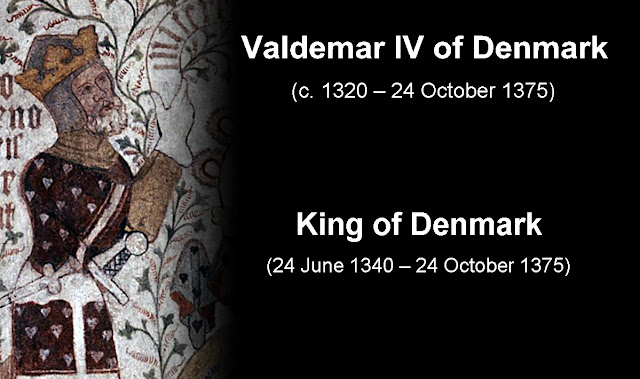Isles). The Union was not quite continuous; there were several short interruptions. Legally the countries remained separate sovereign states, but with their domestic and foreign policies being directed by a common monarch.
The union was the work of Scandinavian aristocracy wishing to
counter the influence of the Hanseatic League. Margaret (1353–1412), a daughter of King Valdemar IV of Denmark, married King Haakon VI of Norway and Sweden, who was the son of King Magnus IV of Sweden, Norway and Scania. Margaret
succeeded in having her son Olav recognized as heir to the throne of Denmark. In 1376 Olav inherited the crown of Denmark from his maternal grandfather as King Oluf III, with his mother as guardian; when Haakon VI died in 1380, Olaf also inherited the crown of Norway.
Margaret became regent of Denmark and Norway when Olaf died in 1387, leaving her without an heir. She adopted her great-nephew Erik the same year. The following year, 1388, Swedish nobles called upon her help against King Albert of Mecklenburg. After Margaret defeated Albert in 1389, her heir Erik was proclaimed King of Norway. Erik was subsequently elected King of Denmark and Sweden in 1396. Erik's coronation was held in Kalmar on 17 June 1397.
The main reason for the failure of the Kalmar Union was the perpetual struggle between the monarch, who wanted a strong unified state, and the Swedish and Danish nobility which did not. Diverging interests (especially the Swedish nobility's dissatisfaction with the dominant role played by Denmark and Holstein) gave rise to a conflict that would hamper the union in several intervals from the 1430s until 6 June 1523 when Sweden rebelled and became independent and the union was dissolved.
Norway continued to remain a part of the realm of Denmark– Norway under the Oldenburg dynasty for nearly three centuries until its dissolution in 1814. Then Union between Sweden and Norway lasted until 1905, when a grandson of the incumbent king of Denmark was elected its king, whose direct descendants still reign in Norway.






